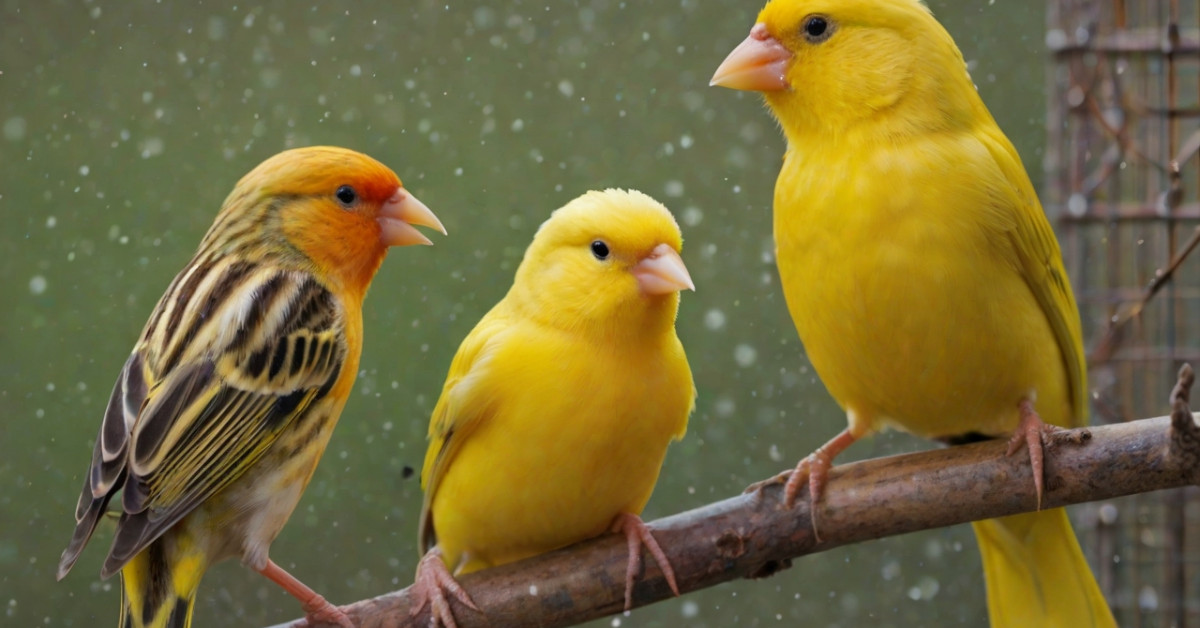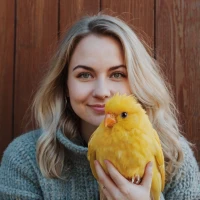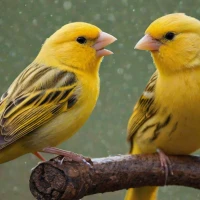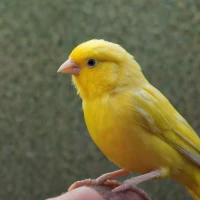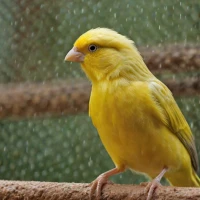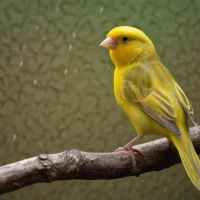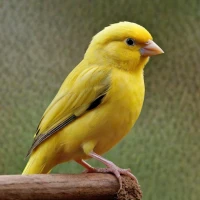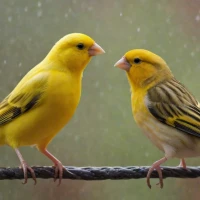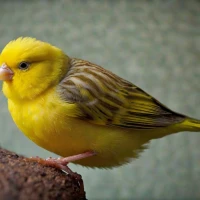My Journey into the World of Colorful Canaries
Ever since I was a young lad, my fascination with birds has flown to new heights (pun totally intended!). For me, it started with an innocent visit to my grandmother’s house where she kept a lively bunch of canaries. Seeing those vibrant little creatures flutter around was pure magic. Over time, my curiosity drew me deeper into birdkeeping, particularly focusing on canary bird colors and patterns. The kaleidoscope of hues and designs in these tiny, energetic birds never ceases to amaze me.
A Spectrum of Colors: The Basics
Canaries are like nature’s little artists. Did you know they come in an array of colors that could rival a painter’s palette? From bright yellows to fiery reds and cool whites, the color variations are nothing short of dazzling. The yellow canary, most commonly known, is the classic image that pops into most people’s heads. But trust me, there’s a whole world beyond that.
Yellow Canaries: The Classic Beauties
Yellow canaries often steal the show. Whenever I see one, I’m reminded of my first pet canary, Tweetie. She was like a ray of sunshine in bird form, always singing her heart out. The yellow coloration is dominant, making these canaries fairly easy to breed. The variety of shades, from a pale lemon to a deep golden, gives these birds a unique charm. Interjecting from an SEO standpoint, keywords like “yellow canary” or “yellow canary bird” often attract a significant level of search traffic, making them SEO gold.
Red Factor Canaries: The Fiery Elegance
Red factor canaries are like the Ferraris of the canary world; they’re not just birds, they’re luxury. The sight of a red factor canary is a striking one—imagine a bright red plumage that grabs your attention effortlessly. Breeding these beauties isn’t for the faint of heart, though. To maintain their vibrant color, a special diet rich in carotenoids is required. I’ve dappled in breeding them a few times, and it’s like mixing science with beauty.
White Canaries: Snowy Elegance
If there’s a bird that embodies grace, it’s the white canary. Pure, pristine, and utterly captivating, white canaries look like little snowflakes come to life. My friend, Lucy, keeps a pair of these wonders, and it’s surreal how spotless they are. Interestingly, the white coloration often signifies a lack of specific pigmentation, which can sometimes be linked to health issues. It’s crucial to keep an eye on their diet and general well-being.
Green Canaries: The Natural Charmers
Green canaries might not be as show-stopping as their colorful cousins, but they have a serene, natural beauty that’s hard to ignore. They’re somewhat rare but worth the effort if you’re into more understated elegance. The green canary often resembles wild canaries found in the wild, making them a charming option for those who prefer birds that mirror nature.
Mosaic Canaries: Patterns Galore!
Oh, the mosaic canaries! These are like the Jackson Pollocks of the bird world. With their intricate patterns and variegated colors, mosaic canaries are an absolute spectacle. Spots, stripes, and blocks of contrasting colors adorn their plumage, making each one a unique piece of living art. If you’re looking to find unique keywords to boost SEO, terms like “mosaic canary,” “patterned canary,” or “highly variegated canary” could work wonders.
How Different Factors Affect Canary Colors
Breeding canaries with desired color traits is no small feat. The type of food, genetic makeup, and even lighting conditions can significantly affect the color outcome. I once tried breeding a yellow canary with a red factor to see if I could get an orange shade. The result was… peculiar, to say the least. The bird turned out with a patchy mix of yellow and red, not quite orange but fascinating nonetheless.
The Role of Genetics in Canary Coloration
Genetics play a monumental role in determining the colors and patterns of canaries. Dominant and recessive genes work in tandem to produce the spectrum of hues seen in these birds. Understanding this genetic play can be both an art and a science. I remember taking a deep dive into Mendelian genetics, trying to predict the outcomes of my breeding pairs. It’s like solving a delightful puzzle with feathered results.
Light Matters: The Photoperiod Factor
Lighting conditions can also influence color. A longer photoperiod, or extended daylight hours, can enhance brighter colors. I use full-spectrum lighting in my aviary to simulate natural daylight, which helps in maintaining vibrant colors in my canaries. It’s incredible how such a small change can create such significant effects.
Diet: You Are What You Eat!
The age-old saying “you are what you eat” couldn’t be more accurate when it comes to canaries. Foods rich in certain pigments can dramatically affect the color of their feathers. A diet high in beta-carotene can induce yellows and reds, while specific seeds can deepen greens and enhance whites. My own experiments with diet have yielded some jaw-dropping results – like the time I turned my dull yellow canary into a shimmering gold with the help of a carefully concocted diet. (Don’t worry, it’s perfectly safe and natural!)
Health and Color
A little-known fact among the general populace is that the health of a canary heavily impacts its coloration. Healthy birds exhibit more vivid colors, while those under stress or malnourished tend to look faded. Owning canaries has taught me to be extra attentive to their needs, realizing that a bright, vibrant bird is often a happy, healthy one.
My Top Tips for Aspiring Canary Keepers
For those of you now captivated by the idea of owning these colorful songbirds, let me share some tips based on my own experience:
- Choose Right: When selecting a canary, ensure you’re getting it from a reputable breeder.
- Diet is Key: Your canary’s diet should be balanced and rich in nutrients to maintain vibrant colors.
- Lighting: Ensure your aviary is well-lit to simulate natural daylight.
- Regular Check-ups: Keep an eye on your bird’s health with regular vet visits.
- Patience: Breeding for color requires a lot of patience. Don’t expect instant results.
Fun Facts about Canaries
Before I wrap this up, here are some fun facts to tickle your fancy:
- Canaries were historically used in coal mines to detect carbon monoxide. If the bird showed signs of distress, miners knew the air wasn’t safe!
- The famous opera singer Enrico Caruso was an avid canary lover, known for keeping these melodious birds.
- Canary songs are not just random tweets; they’re structured, and some canaries even sing in dialects!
In Closing: A Personal Reflection
Overall, exploring the world of canary colors and patterns has been a deeply enriching journey for me. It’s a blend of science, nature, and pure joy. These birds have taught me patience, attention to detail, and the undeniable beauty of nature in its most feathery form.
So, if you’ve ever contemplated bringing a burst of color and a melody of chirps into your life, canaries might just be your perfect match. Thanks for joining me on this colorful adventure! Keep an eye out for the next feathered friend update, and remember, life is better with a chirp and a song! 🐦
ارائل! (Farewell in Arabic)
Thank You! 🌟
Thank you for spending your time reading my blog. I hope it brought a little color to your day!
